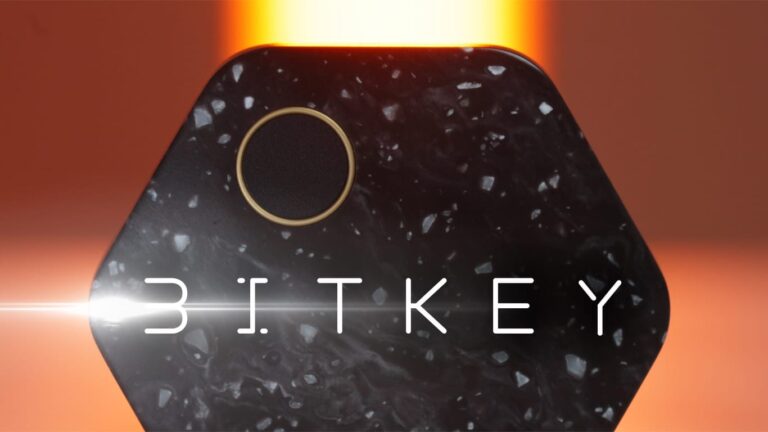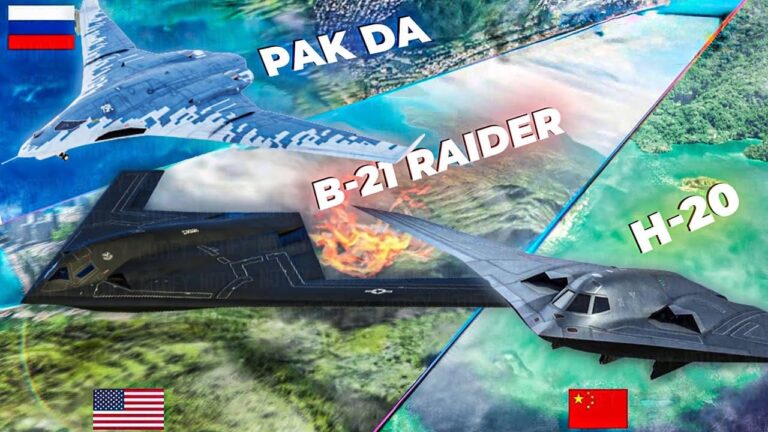Strategic bombers – think of them as the quarterbacks of the skies! They are those medium to long-range MVPs, dropping a significant payload to throw the enemy off their game. Their mission? Deprive the adversary of the resources to even think about challenging you on the battlefield. Such heavy hitters are the game changers in today’s defense playbook, taking the lead role when drawing up war strategies. Now, when we talk powerhouses, the U.S., Russia, and China come to mind. They’re like the NFL’s top teams, each boasting its superstar quarterback – the B-21 for the U.S., the H-20 for China, and the PAK-DA for Russia. The word on the tarmac is, these three are the Tom Bradys and Patrick Mahomes of the bomber world. Though they’re gearing up to hit the skies, we’ve got some sneak peeks! So, who’s leading the pack in this aerial showdown? Grab your popcorn; let’s break it down! It’s fascinating how each of these nations chalked up their flight paths. Let’s board this time machine! Starting with the U.S. B-21 Raider. Crafted by the maestros at Northrop Grumman,this bad boy is pegged as the next-gen B-2 Spirit. Playbook started getting drawn around 2011, and if rumors are anything to go by, it’s gearing up for its debut flight in the mid-2020s. And guess what? It’s said to combine its strategic reach with the kind of stealth tech that’s straight out of sci-fi! Next up, hailing from the icy terrains of Russia is the Tupolev PAK DA. With the brains of the Tupolev PAK DA Design Bureau behind it, this aerial beast is here to bench the Tu-95 and Tu-160. It’s like Russia’s saying, “Hey, we’re all in on strategic bombers and stealth!”

Announced back in 2009 and kickstarted in 2013, we could see this bird spread its wings by 2025, and if all goes as planned, it’ll be the new face of the Russian skies by the mid-2030s. Now, flying in from the East is China’s Xian H-20. This marvel, rising from the stables of the Xian Aircraft Industrial Corporation since 2016, is not just any aircraft. It’s a testament to China’s jet-powered ambition, flaunting state-of-the-art stealth and range. The buzz is that it’ll be showcasing its prowess from the early to mid-2030s.
So, when you lay the stats side by side, it’s evident: these trios are the avian elites of stealth strategic bombers, and boy, are they in a league of their own! Alright, strap in folks! We’re about to dive deep into the specs of these aerial titans. But a quick heads up – the blueprints of these beauties are as guarded as the Crown Jewels. So, while we’re doing our best to unpack what’s out there, some of the deets might change as more becomes known. the juiciest given the tight lips on these projects, our comparison might not be apples-to-apples, but we’ll serve up bits we’ve got. First off, the stealth factor! All three bombers have leveled up in the stealth department, much like a video game character maxing out its skills. This tech-savvy trio can ninja their way past radars, making them a nightmare for enemy defenses. Not only do they have advanced stealth capabilities, but their composite materials are like invisibility cloaks. They’re basically the Harry Potter of the skies, but let’s see how they really stack up against one another.

Kicking off with the B-21 Raider, it’s stepping in for the legendary B-2 Spirit. And while some call them doppelgangers, there’s more than meets the eye. Sporting a length of roughly 69 feet and a wingspan that’s a whopping 170 feet, the Raider is crafted with top-tier materials that make radars go “Huh? Where’d it go?” Its sleek body and flat features are all about playing hide and seek with radar beams. Is the B-2 Spirit elder? Oh, that tech-savvy bird is like the first-gen smartphone. Sure, it’s smart, but the B-21? That’s like the latest iPhone. Those four engines? They’re hidden,shushing their infrared signatures. Couple that with AI and cutting-edge systems, and you’re not just looking at a bomber; you’re gazing at an airborne supercomputer. Switching gears to the East, meet the Xian H-20. Stepping in for the H-6, this bird’s not just an upgrade; it’s a total revamp. The H-6? It drew inspiration from the Soviet Tupolev Tu-16, which China got its hands on way back in the ’50s. The H-20, though? That’s China’s tight-lipped mystery. But word on the airstrip is that it’s rocking a streamlined body to play peek-a-boo with radars. And the materials?
They’re supposedly as futuristic as they come, boosting performance and melting into the skies. Meanwhile, the Tupolev PAK DA is a bit of an enigma. Akin to a much-anticipated sequel, we’re expecting it to inherit the legacy of its predecessors, the T-160 and T-95. That sleek aerodynamic nose? It’s crafted to cut through the skies, minimizing drag and maximizing speed. But let’s not forget its lineage; so while it’s modern, it might be borrowing some style cues from its ancestors. If this were a design contest, the U.S. B-21 Raider might just snag the trophy.It’s like the brainchild of a Silicon Valley techie and an aerospace engineer. Considering it’s following the footsteps of the already futuristic B-2 Spirit, its advancements are nothing short of jaw-dropping. As for China and Russia, they’re pulling from some classic inspirations, but have layered on their own 21st-century tech magic. While their designs might echo the past, their stealth game? Aces! Now, onto the heavy stuff. The B-21 Raider isn’t just bringing the bling; it’s packing a punch. We’re talking a staggering 30,000-pound load and the stamina to travel over 6,000 nautical miles. From the JASSM-ER cruise missile to the hefty 1,984-pound GBU-31 JDAM bomb, this flying fortress is like an Amazon delivery truck – specialized and efficient! Switching back to the East, the Xian H-20 is shrouded in more mystery than a spy novel. But we’ve got our ears to the ground.
The buzz is that it can house a mix of deadly weapons, including potential cruise missiles and nukes. Oh, and get this, its range? It could go for a little trans-Pacific jaunt and even knock on America’s doors. So, its belly? Probably spacious! And then there’s the Russian powerhouse, the Tupolev PAK DA. It’s like the marathon runner of the bunch. It’s believed to cruise between 7,456 to 9,320 miles non-stop. And while it’s said to be kitted out with weapons similar to its U.S. and Chinese counterparts, it’s got an ace up its sleeve – hypersonic weapons. These bad boys zoom at over Mach 5, making enemy defense systems sweat. If there are updates about these three aircraft, I will post them soon. so stay tuned and stay notified!







